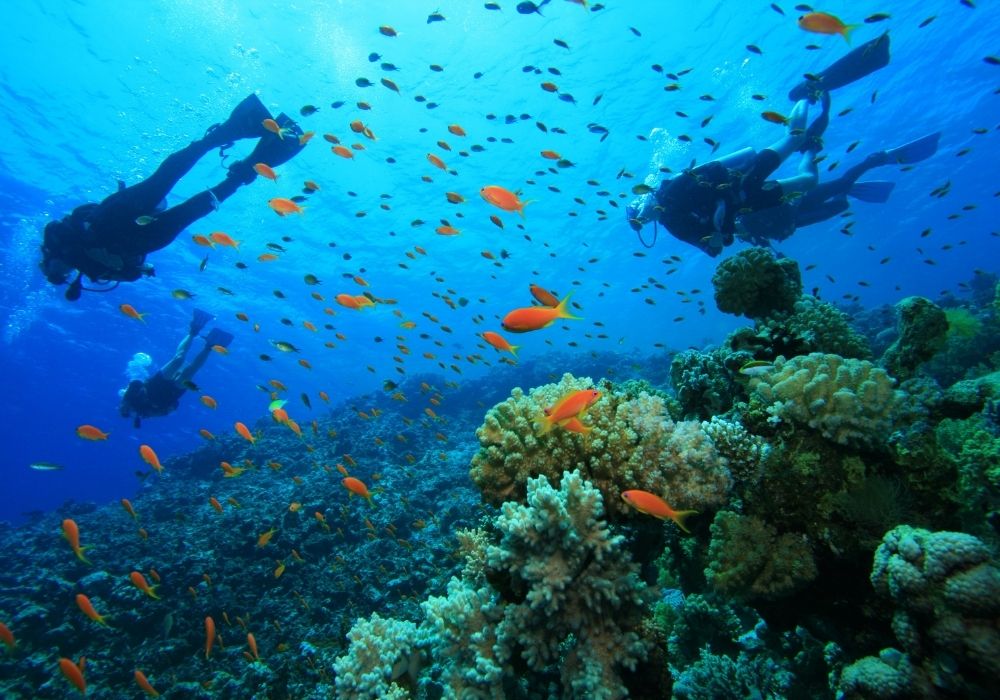Sometimes, the simplest questions don’t have straightforward answers. If you’re wondering how many oceans there are in the world, this is certainly the case!
Technically, there is one ocean, known as both the Global Ocean and the World Ocean. It holds 96.5% of all of the water on Earth and stretches around the planet.
However, with 71% of the surface of the Earth covered in water, there’s plenty of scope for naming individual ocean basins and introducing confusion.
For many years, there were four recognised ocean basins, which led many people to consider there to be four oceans: the Atlantic, Pacific, Indian and Arctic.
More recently, the Southern (or Antarctic) ocean basin has been recognised by most countries, leading some people to consider there to be five oceans: the Atlantic, Pacific, Indian, Arctic and Antarctic.
So, are there five oceans or seven?
In case the above isn’t confusing enough, there’s the matter of the “seven seas” to deal with. The seven seas is a phrase that has been used for centuries to describe the world’s oceans. For the last couple of hundred years, it has been used to describe seven bodies of oceanic water: the Arctic, North Atlantic, South Atlantic, Indian, North Pacific, South Pacific and Southern (Antarctic).
Well, if we’re talking about actual seas, then there are more than 70 of those, according to the International Hydrographic Organization.
Unless of course we’re referring to “the sea,” which means the Global Ocean.
For the purposes of this article, we’re going to look at the five oceans as defined by the names of their oceanic basins. Why is the Pacific Ocean bluer than the Atlantic? Which animals live in the Indian Ocean? How cold is the Arctic Ocean? And where precisely is the Southern Ocean?
Read on to discover all of this and more!
The Pacific Ocean
The Pacific Ocean was named by Portuguese navigator Ferdinand Magellan, who set off in 1519 to find a route via South America to the “Spice Islands” (the Maluku Islands). The comparative calm of the water when Magellan and his crew entered the ocean led him to name it ‘Pacific,’ meaning peaceful.
It is the oldest of the world’s ocean basins. The oldest rocks on the Pacific Ocean floor date back 200 million years.
Where is the Pacific Ocean?
The Pacific is by far the largest of Earth’s ocean basins. It stretches from the Antarctic in the south to the Arctic in the north. From east to west, it reaches from North and South America to Asia and Australia.
A number of island countries are dotted within the Pacific, including Samoa, Vanuatu, Fiji and many others.
In total, the Pacific Ocean has a coastline that covers 84,297 miles. Plenty of room for those who want to splash, swim, fish, surf and paddleboard in it.
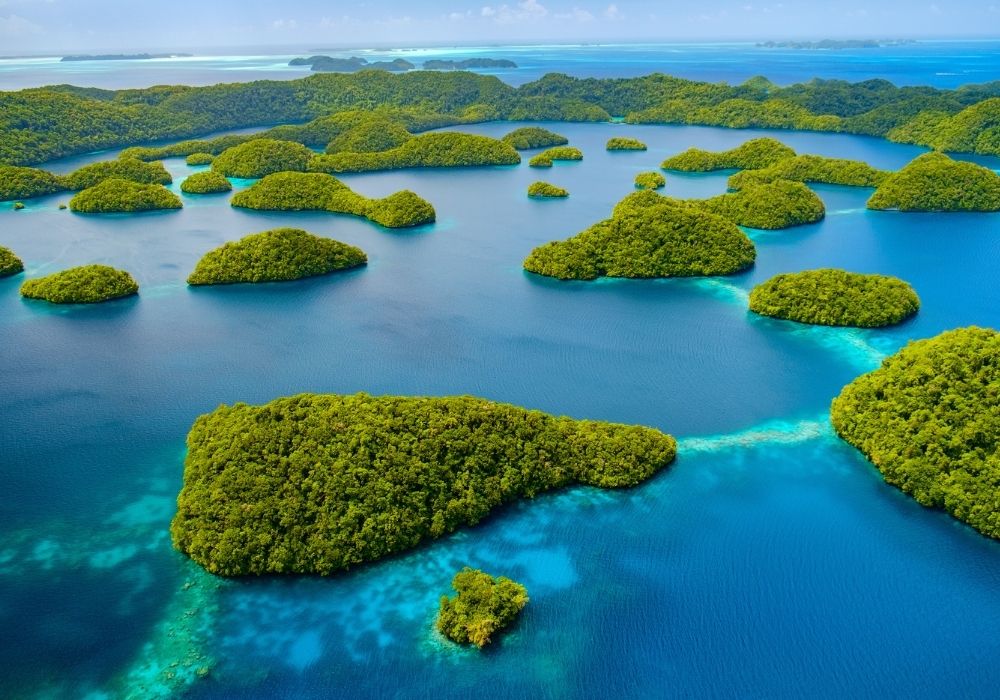
How big is the Pacific Ocean?
It’s huge. The Pacific Ocean contains over half of the free water on Earth and extends for around 59 million square miles. It covers 32% of the Earth’s surface and 46% of its water surface.
To put this in perspective, that’s big enough to fit all the continents in and still have room left to spare.
How deep is the Pacific Ocean?
It’s deep. Very, very deep. In fact, the Pacific Ocean is home to the deepest point in the world – Challenger Deep in the Mariana Trench. Located in the western north Pacific, Challenger Deep is 10,928 metres deep.
The Pacific is also home to the second and third deepest points on Earth. Those are Horizon Deep in the Tonga Trench, at 10,823 metres, and the Sirena Deep in the Mariana Trench at 10,809 metres.
All three locations are deep enough to comfortably fit Mount Everest in, as the world’s tallest mountain stands a mere 8,848 metres above sea level!
Of course, not every part of the Pacific is that deep. The ocean’s average depth is 4,280 metres, which is still pretty impressive, marking it out as the deepest ocean on Earth as well as the largest.
What animals live in the Pacific Ocean?
The Pacific Ocean is home to an incredibly rich diversity of marine wildlife. From its warmer, shallow coastal waters to the dark depths of the Mariana Trench, the Pacific is home to over 5,000 species.
And those are just the ones we know about! The sheer size of the ocean means that there are inevitably species within it that humans have yet to observe and document.
Some of the weird and wonderful creatures that call the Pacific Ocean home include hammerhead sharks, giant tube worms, dugongs, stellar sea lions, sea slugs, giant squids, sea turtles, manta rays, humpback whales, killer whales and thousands of species of fish.
Why is the Pacific Ocean bluer than the Atlantic?
The ocean appears blue due to the speed at which it absorbs light. The water itself is clear, but seawater absorbs red, green and yellow light fastest, leaving the ocean looking blue.
The depth of the ocean also comes into play, as does what’s in the water and what’s beneath it. When the water is deep enough that light can’t reflect off the bottom, it appears a deep, dark blue. In shallower waters, however, the blue light bounces back off the bottom, with a base of white sand or rocks creating a beautiful turquoise blue.
Suspended sediment, plant and animal life also impact ocean colour, with phytoplankton turning the waters green and sediment turning it brown.
It is a combination of all of these factors that gives the Pacific Ocean a bluer appearance than the Atlantic.
The Atlantic Ocean
Known affectionately as “The Pond” to those in the UK and US, the Atlantic Ocean can trace its name back to the mid-sixth century BC, when the Greeks believed it to be the sea that surrounds all land.
Where is the Atlantic Ocean?
The Atlantic Ocean extends from North and South America in the west to Europe in the east, where it connects with the Mediterranean Sea. At Tarifa, in Spain, you can dip your toes in the Atlantic at the beach on one side of a walkway, then run across the walkway to jump into the Mediterranean.
To the north, the Atlantic connects to the Arctic Ocean, while in the southeast it merges into the Indian Ocean.
Altogether, the Atlantic Ocean has a coastline measuring 69,510 miles. Not as big as that of the Pacific, but still long enough to incorporate some of the world’s best surfing spots.
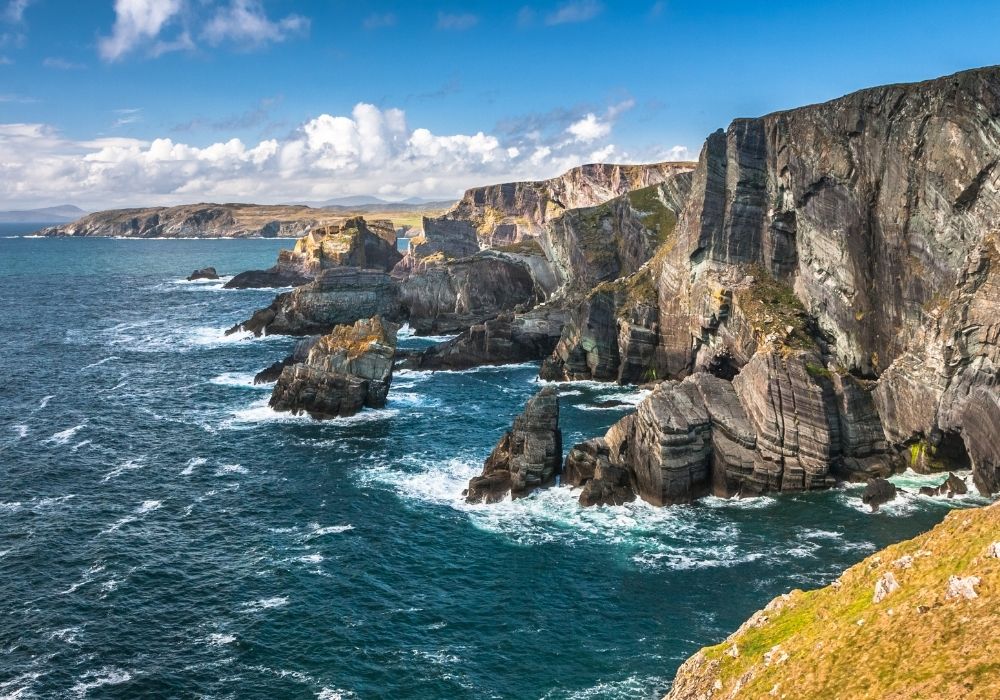
How big is the Atlantic Ocean?
With its marginal seas included in the total count, the Atlantic Ocean covers an impressive 41.1 million square miles. That’s 23.5% of the total Global Ocean.
Marginal seas aside, the Atlantic covers 31.57 million square miles. That’s still a whole lot of room for fish.
The ocean is split fairly evenly between the North Atlantic, covering 16 million square miles, and the South Atlantic, covering 15.6 million square miles.
While the Atlantic Ocean is already massive, it’s actually getting bigger. Every year, it expands by a few centimetres due to plate tectonics.
How deep is the Atlantic Ocean?
The average depth of the Atlantic Ocean is 3,646 metres. At its deepest point, however, it stretches down a whopping 8,376 metres. That point – the Milwaukee Deep – is located in the Puerto Rico Trench, northwest of (funnily enough) Puerto Rico.
How cold is the Atlantic Ocean?
Given its size, varying depths and geographical spread, the Atlantic Ocean’s temperature varies quite considerably.
The coldest part of the Atlantic is the Arctic Bottom Water, which ranges from -1.8°C to -0.5°C. The warmest part is the Eastern North Atlantic Central Water, which ranges from a rather chilly 8.0°C to a much more pleasant 18°C.
What animals live in the Atlantic Ocean?
The Atlantic is teeming with ocean life, from killer whales and walruses to the wonderfully energetic spinner dolphins. It pushes cold and warm currents around the globe and so can accommodate creatures that love a wide range of temperatures.
The warmer waters of the Atlantic are home to manatees, spotted eagle rays and green sea turtles, while its colder areas are packed with king penguins, narwhals, seals and so much more.
The Indian Ocean
Home to some of the world’s warmest ocean waters and including a submerged volcanic continent, the Indian Ocean is one of the most fascinating bodies of water on Earth.
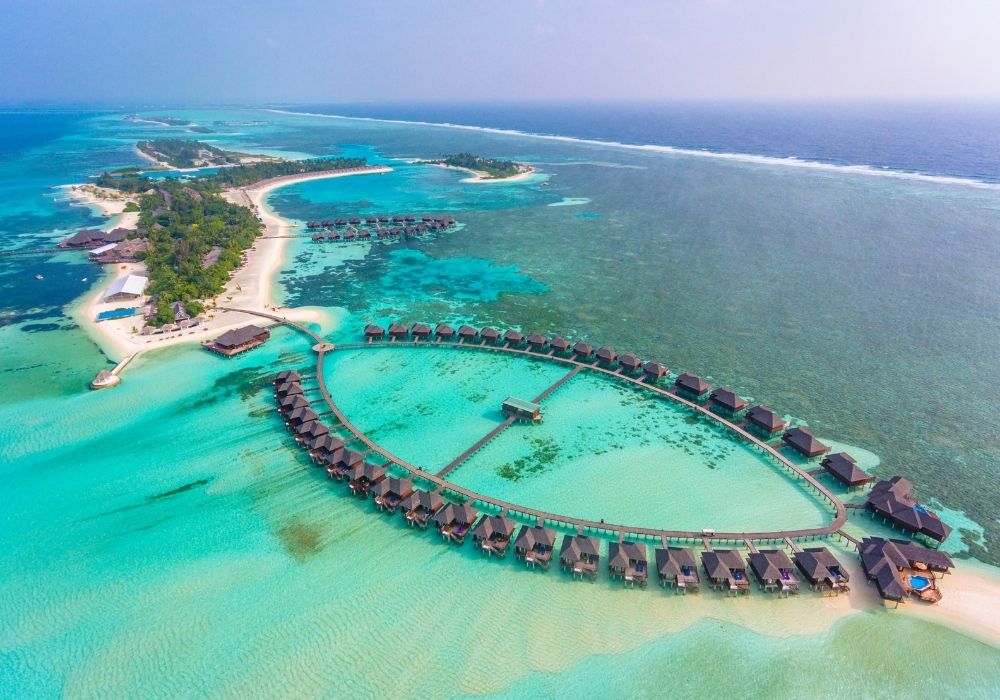
Where is the Indian Ocean?
The Indian Ocean reaches from the Southern Ocean in the south to the Persian Gulf in the north, covering the area between Africa, Asia and Australia.
The whole of the Indian Ocean is located within the Eastern Hemisphere.
How big is the Indian Ocean?
The Indian Ocean is the world’s third largest ocean, accounting for 19.5% of the total Global Ocean. It covers 27.2 million square miles, including the Red Sea and Persian Gulf.
How deep is the Indian Ocean?
The deepest point of the Indian Ocean is the Sunda Deep, off the Java Trench, which is located off the southern cost of Java. The ocean extends to 7,450 metres deep at that point.
In average terms, the Indian Ocean has a depth of 3,741 metres – shallower than the Pacific and Atlantic, but still plenty deep enough to create challenges for those wishing to explore it, thanks to the considerable pressure at that depth.
What animals live in the Indian Ocean?
The warmest of the world’s oceans, the Indian Ocean ranges from 19-30°C in its upper layer. This is reflected in the diverse range of marine life that the ocean is home to.
While the warmer temperatures mean plankton is not abundant, there’s still plenty of species to be found in the Indian Ocean, including great white and dusky sharks, finless porpoises, clown anemonefish (yes, the ones like Nemo), bottlenose dolphins and dugongs.
And, of course, fish. Thousands of species of fish of all shapes, sizes and colours imaginable!
The Arctic Ocean
The Arctic Ocean is the coldest in the world. If you’re looking for a place to enjoy a quick dip, this isn’t it. However, its icy waters are packed with life.
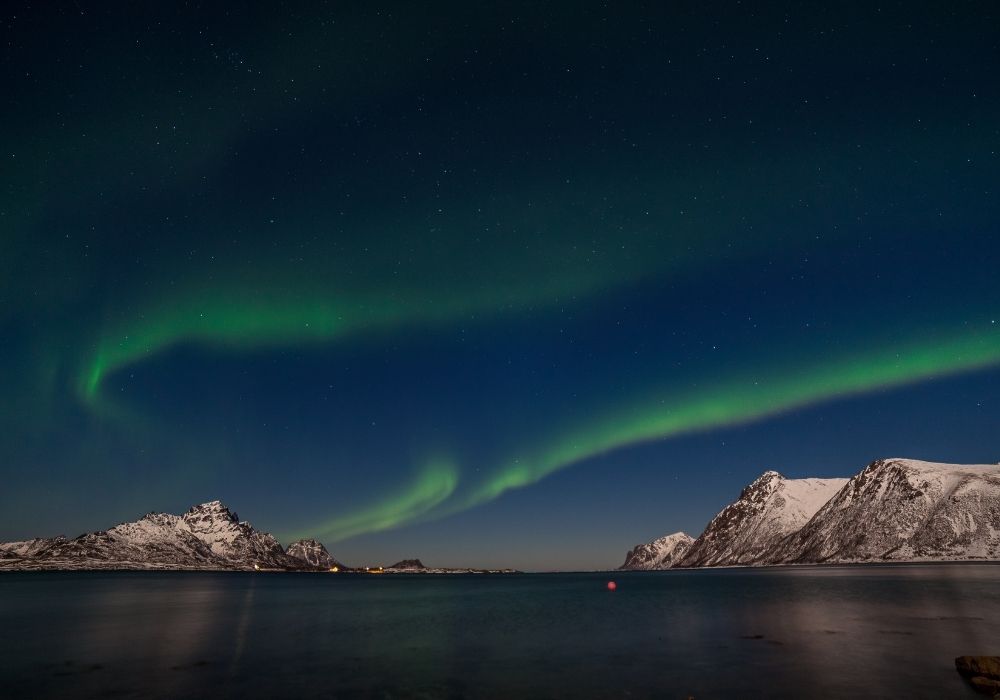
Where is the Arctic Ocean?
The northernmost part of the World Ocean, the Arctic Ocean is bordered by the Atlantic Ocean, the Pacific Ocean (at the Bering Sea), Eurasia and North America.
It includes the North Pole region and is covered by sea ice for most of the year and almost completely so during the winter months. The increasing reduction in size of this sea ice is one of the starkest indicators we have of the impact of global warming. Its average extent as at 2012 had diminished by 49% compared to the average from 1979 to 2000.
How big is the Arctic Ocean?
The Arctic Ocean is the smallest of the world’s oceans. So much so, in fact that some oceanographers refer to it as the Arctic Mediterranean Sea, while others classify it as an estuary of the Atlantic. However, the International Hydrographic Organization (IHO) is holding firm in recognising the Arctic as an ocean.
Altogether the Arctic Ocean covers 5.4 million square miles – that’s more than ten times smaller than the Pacific. To put things in perspective though, the Arctic Ocean is still 1.5 times the size of the United States.
How deep is the Arctic Ocean?
As well as being the smallest and coldest of Earth’s ocean basins, the Arctic is also the shallowest, with an average depth of just 1,038 metres.
At its deepest point – the Molloy Hole in the Fram Strait, east of Greenland and west of Svalbard – the Arctic Ocean is 5,550 metres deep.
How cold is the Arctic Ocean?
It’s extremely cold. While the surface temperature varies seasonally, as the sea ice freezes and melts, it hovers around -1.8°C, that being the temperature at which seawater freezes.
What animals live in the Arctic Ocean?
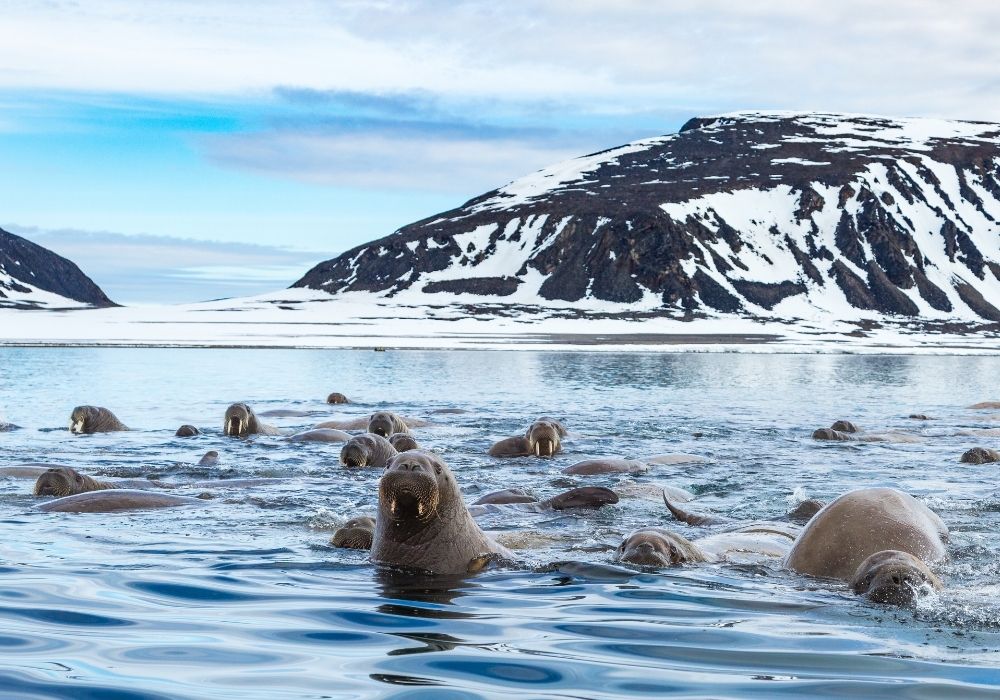
With the lowest average salinity of the five oceans, as well as the coldest temperatures, the Arctic Ocean is home to a wonderful array of marine life. The months of midnight sun and polar nights come into play as well, with phytoplankton production usually limited to the period from March/April to September.
The Arctic waters are packed with herring, capelin and young cod, which support the existence of walruses, bearded and ribbon seals, narwhals, bowhead and beluga whales, lion’s mane jellyfish and more. Pretty much all of which are eaten by polar bears, the poster boys of environmental preservation efforts.
The Southern Ocean
The Southern Ocean is the baby of the bunch. It’s just 30 million years old, having formed when Antarctica and South America parted ways. It is the southernmost part of the World Ocean.
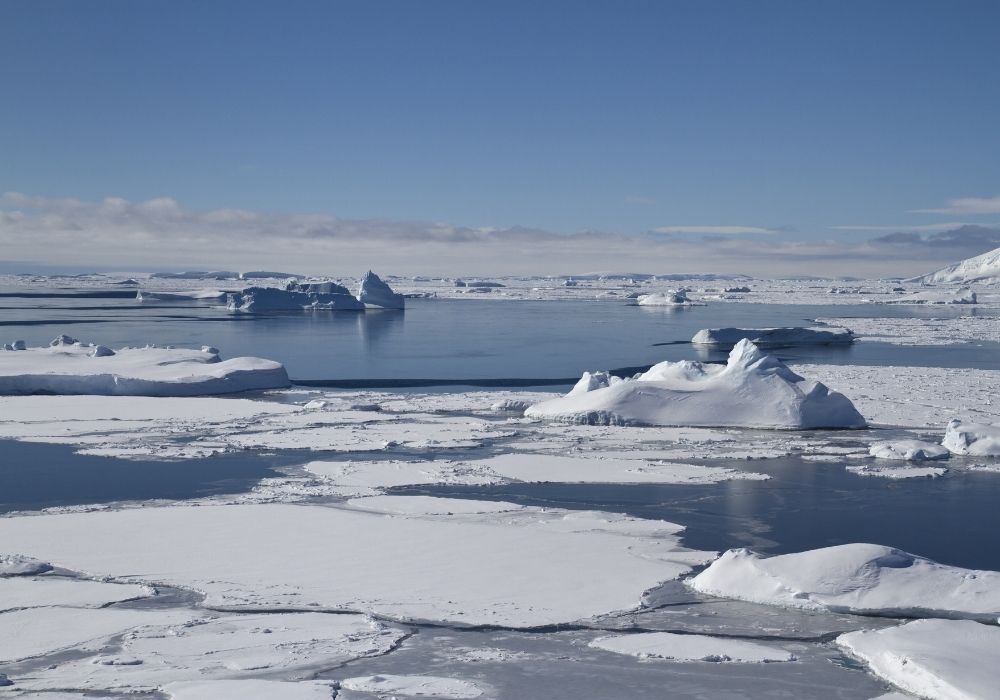
Where is the Southern Ocean?
The Southern Ocean can be found encircling Antarctica. Oceanographers have hotly debated its precise boundaries for centuries, with some even passing it off as merely the southernmost sections of the Pacific, Atlantic and Indian Oceans.
Officially, according to the IHO, the Southern Ocean is the body of water that lies to the south of the northern limit of the Southern Circulation.
How big is the Southern Ocean?
The Southern Ocean is the second-smallest of the five oceans, covering just 6% of the Earth’s surface. Its waters encompass 7.8 million square miles.
How deep is the Southern Ocean?
The Southern Ocean has an average depth of around 3,200 metres, with few areas of shallow water.
The deepest point was until recently believed to be the southernmost end of the South Sandwich Trench, which extends downward some 7,236 metres. However, in February 2019, the Five Deeps Expedition’s multibeam sonar measured a depth of 7,434 metres at 60° 28′ 46″S, 025° 32′ 32″W. The expedition’s leader, Victor Vescovo, has proposed naming the location the Factorian Deep.
How cold is the Southern Ocean?
The Southern Ocean ranges from -2°C to 10°C. Intense storms often arise as a result of the difference in temperature between the ocean’s waters and the Antarctic ice – so much so that the Antarctic Circle is home to the strongest winds on the planet.
What animals live in the Southern Ocean?
Freezing cold waters and terrifying storms might not sound like the most hospitable combination but plenty of hardy creatures still call the Southern Ocean their home. Killer whales, king crabs, gentoo penguins, cuttlefish, leopard seals, emperor penguins and more all abound.
Conclusion
The world’s oceans are teeming with life, from microscopic organisms to the enormous blue whale. Each ocean contains its own microcosms of marine life, with current movements, water temperatures and more impacting what can thrive where.
Our oceans are home to an estimated 33,600 species of fish and a total of 2.2 million different species, according to the Census of Marine Life.
Staggeringly, scientists estimate that 95% of the Global Ocean remains unexplored and that we have yet to classify 91% of ocean species. When it comes to the world’s oceans, there’s still plenty of work to be done!
